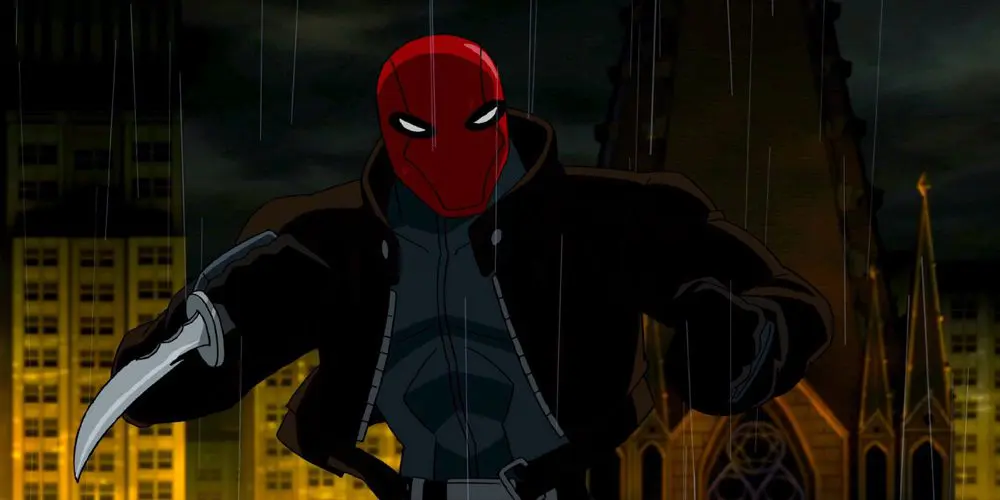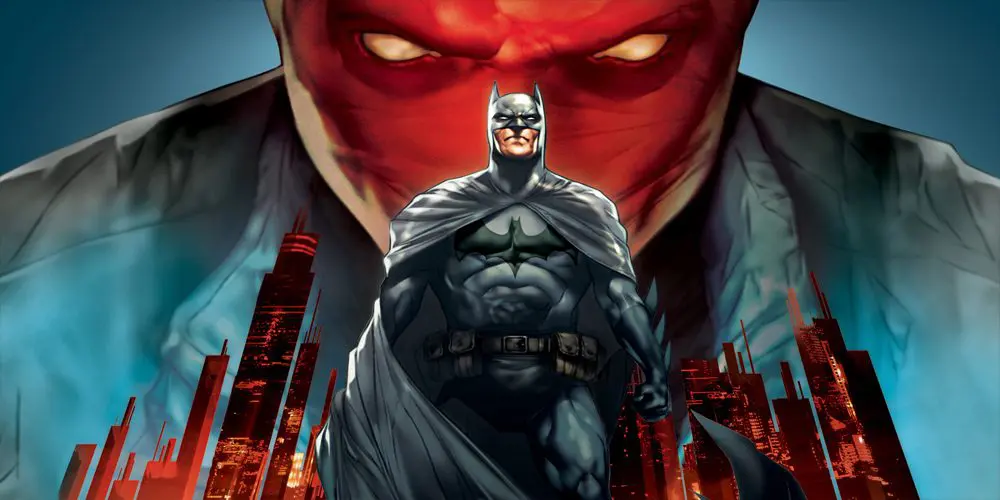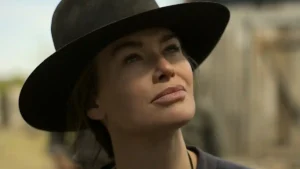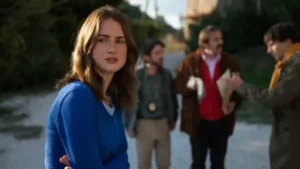Summary
In a world where Christopher Nolan’s The Dark Knight doesn’t exist, Batman: Under the Red Hood might be the greatest Batman story ever told.
Batman: Under the Red Hood is a DC Universe Animated Original Movie. Check out the full archive by clicking these words.
Allow me to be frank for a moment: In a world where Christopher Nolan’s The Dark Knight doesn’t exist, Batman: Under the Red Hood is the greatest Batman movie ever made. That sounds like hyperbole, I know. How can a 70-minute animation possibly live up to feature-length Hollywood blockbusters? And yet, here we are. Under the Red Hood manages to bottle some of The Dark Knight’s essence; the focus on being a dark, gritty crime drama above a theatrical superhero story, the Joker as a primary antagonist, the brooding vulnerability of Bruce Wayne, the violence, the thematic weight. But it filters these things through DC’s now-trademark smooth and polished animation, slickening the action with overblown bust-ups against giant androids and cybernetic assassins. It has room for characters, scenes, and ideas that feel more reminiscent of a splash panel than a screenwriter’s storyboard, but that mature take on one of comics’ most ludicrous stalwarts remains resolutely intact.
It’s an odd mix, but a surprisingly potent one. The story is an adaptation of Judd Winick’s 2005 Batman arc “Under the Hood”, but it incorporates elements from the seminal “A Death in the Family”, too. When the latter’s four issues were running in the late 80s, DC set up a hotline so that fans could vote on whether Jason Todd, the second Robin after Dick Grayson, would live or die. That Under the Red Hood opens with the Joker (John DiMaggio) seemingly beating Todd (Jensen Ackles) to death with a crowbar should give you a decent idea of how they voted.
Much like how you can always rely on comic-book fans for macabre plot decisions, you can rely on DiMaggio to deliver a demented performance as the Clown Prince of Crime. Outside of Mark Hamill and the late Heath Ledger, nobody better embodies the grinning, face-painted lunacy of the Joker than him, and it’s important here, in a story so reliant on his mania. Winick also wrote the screenplay, and he once again captures something fundamentally tragic and everlasting about Joker’s relationship with Batman (Bruce Greenwood), the power he holds over his heart and mind, their mutual unwillingness to properly do-away with each other. The tale has its share of twists and turns, but what it boils down to is the same old conflict between Batman and his nemesis: Both will do whatever they can to destroy each other, but not the one thing that would bring their decades-long rivalry to a real end.

Because that rivalry is so well-known and so central to how most Batman stories function, Under the Red Hood shakes it into the margins of a crime drama that sees Black Mask (Wade Williams) as the reigning kingpin of Gotham City’s blood-soaked underworld. His criminal empire is being threatened by a mysterious vigilante known as Red Hood, who seems as smart and well-trained as Batman himself, but eager to prove he doesn’t share the Caped Crusader’s compunction about killing. The first thing he does is slap a duffel bag full of severed gangster heads on a table, just to let everyone know who’s in charge. The Red Hood mantle has a long and storied history in Gotham’s underbelly, and so Batman assumes, at first, that this is just another small-time crook trying to make a name for himself. No such luck.
I won’t spoil who’s under the hood, but the movie doesn’t seem to make much of an effort to hide it, and anyone who has read Winick’s original story will know where this one is going. As I’ve covered these animated movies, I’ve returned to the same criticism again and again, that the nuance and depth of a storyline are lost when you condense it into 60, or 70, or even 80 minutes. Under the Red Hood’s approach is smarter, more knowing. It recognizes that to try and replicate the slow build of the comics wouldn’t work, so it’s instead matter-of-fact about its reveals. The director here is Brandon Vietti, a veteran of Bat-toons, and someone who clearly understands these characters and the world they inhabit. The action is orchestrated around Batman’s wits, his gadgets, his fighting prowess – all the powerless components that make him powerful. Red Hood, too, works in a similar, albeit bloodier, way. There are still dollops of profound silliness here, but far fewer than usual.

That isn’t to say that some silliness isn’t welcome in a superhero story, but all available evidence seems to suggest that Batman, an intrinsically silly character, works best when he’s presented seriously. The things that make him most interesting are the relatable human flaws that inform his superheroics; the guilt, the aloofness, the overwhelming responsibility he feels towards his city and his extended Bat-family, which includes Robin, and also Nightwing (Neil Patrick Harris), who here is effortlessly charismatic, and tempers Batman’s seriousness with wisecracks. A lot of the movie’s considerable kinetic energy also comes courtesy of him, and his inclusion seems an incredibly smart choice, especially considering that he represents one potential outcome of being a Batman sidekick, while the rest of Under the Red Hood demonstrates another.
The DC animated originals that I’ve seen and written about thus far have all exhibited a fairly consistent level of quality, but only Wonder Woman and, now, Batman: Under the Red Hood, have felt so assured in their storytelling, masterful in their construction, and compelling in their execution. This is a terrific film, not just by the flimsy standards of animated fare, but by any critical metric you could apply to it. If you’re a Bat-fan, Under the Red Hood is mandatory viewing.




